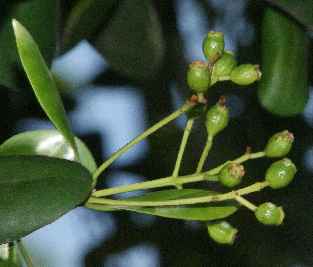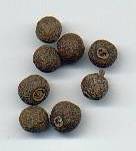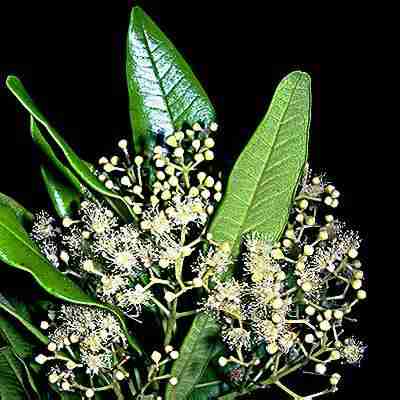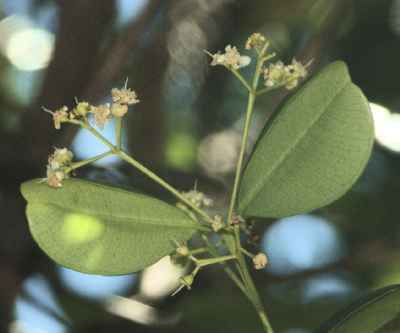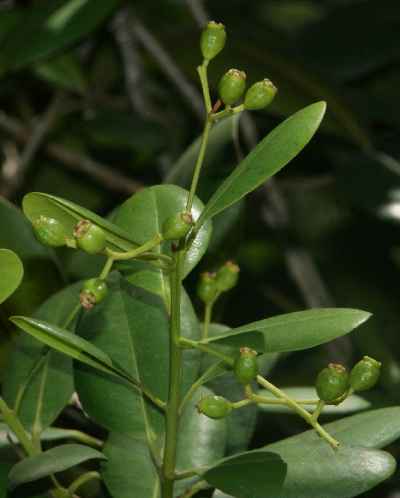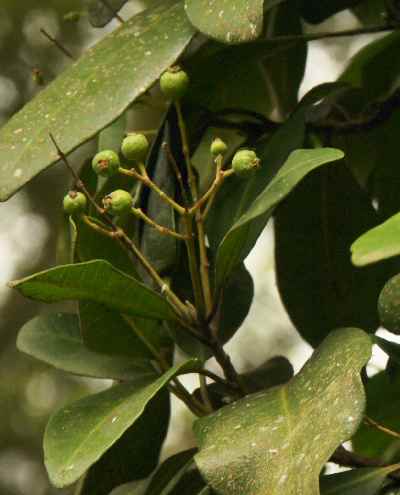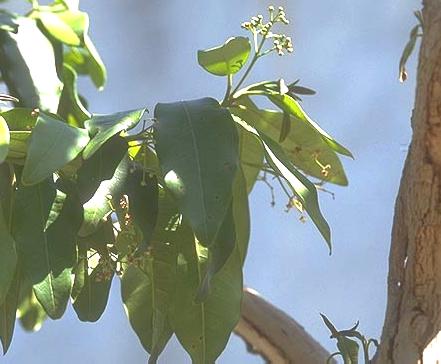
|
| Allspice branch |
Jamaica is known for its fiery jerk pastes, which are commonly used to marinate pork or chicken before barbecuing. Jerk is made mostly of onions and local chile cultivars of unmatched heat and pungency. The paste derives is characteristic taste from allspice berries, furthermore allspice or cinnamon leaves, garlic, fresh thyme, black pepper and vinegar or lime juice; the recipe is variable and may include further seasonings like orange juice, coriander leaves, ginger, nutmeg and cinnamon. Authenticity is increased by adding dry allspice branches to the firewood.
Allspice is also grown in México, albeit in lesser quality. It is used there for the famous mole sauces of Central México (see paprika) and often also for the recados of Yucatán (see annatto).
In Europe, England consumes most of it. The British like it for stews and sauces and for flavouring pickled vegetables (together with white mustard seeds). Allspice is also quite popular in the US, where cooks use it for quite similar purposes.
On the European continent, allspice is less appreciated; it is, however, contained in commercial spice mixtures for sausages and much loved by Scandinavians for fine meat pastries, as are used in the Danish specialty smørrebrød (white bread topped with a selection of sausages, pastries, fish, cheese and vegetables). Other spices popular in Scandinavia are dill and cardamom seeds.
Allspice berries sometimes show up in the somewhat antiquated French spice
mixture quatre épices (see nutmeg). Somehow, it also made its way to Eastern Europe,
where it leaves a fingerprint flavour on some particular dishes, e. g., the Ukrainian
hotpot soup borshch or borshtsh [борщ].
This is a strong broth made from several meat types and bones, served with the meats used to
prepare at an vegetables, typically cabbage. Borshch became popular already in Tsarist
Russia, and spread all over the Russian (and Sowiet) sphere of influence; today, it is
also eaten in the splinter states of the USSR.
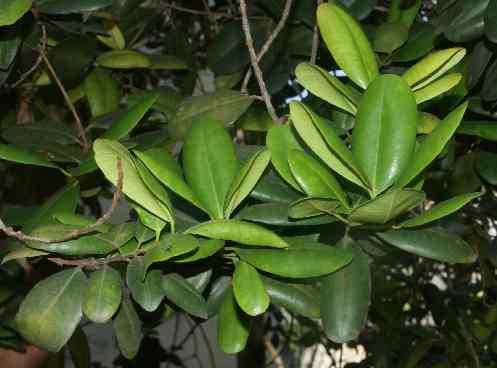
|
| Allspice, sterile branch |
It is interesting to note that allspice has not been accepted by Asian cooks, although its occurrence in curry powder is sometimes claimed (see curry leaves) and it is quite well-known in South Eastern Europe and the Eastern Mediterranean (Greece, Turkey, Syria), but not further East. The pungent–aromatic quality of allspice is, however, much in line with Arabic cooking style; it is rather surprising that allspice is not called for in Central Asian or Indian mutton dishes. I guess this is not a matter of taste but of availability, since allspice is nowhere grown in Asia to a significant extent.
While allpice fruits are also (in general) absent from India, allspice leaves have become a popular flavouring in the spice producing parts of South India, namely the Western Ghats. They are used for South Indian adaptions of Mughal foods, particularly biryani (see cardamom); in that, they replace the Northern Indian Bay-leaves which have remotely similar flavour. Many cooks are, in fact, not aware that these are two different spices.
The only cuisine of the Old World using
allspice lies in East Africa: The Ethiopian spice mixture
berbere (see long pepper) indeed
contains allspice, which is grown on Réunion Island not far away.
